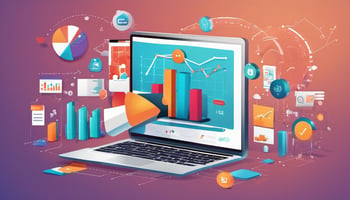Learn how to increase customer retention and maximize lifetime value through strategic email...
Crafting a Memorable Experience: The Art of Automated Welcome Email Campaigns

Discover the secrets to creating impactful automated welcome email campaigns that leave a lasting impression on your audience.
Crafting a Compelling Welcome Email Sequence
Welcome emails are the first point of contact with your audience, and it's crucial to create a compelling sequence that captures their attention. Start by introducing your brand and setting the tone for future interactions. Use a friendly and conversational tone to make your subscribers feel welcome and valued.
In your welcome email sequence, provide value to your subscribers immediately. Share helpful resources, exclusive content, or discounts to incentivize them to stay engaged. Keep the emails concise and easy to digest, focusing on one main message per email.
Don't forget to include a clear call-to-action in each email to encourage your subscribers to take the desired action, whether it's making a purchase, signing up for a webinar, or following your social media channels. A compelling welcome email sequence sets the foundation for a long-lasting relationship with your audience.
Using Personalization to Drive Engagement
Personalization is critical to driving engagement and making your subscribers feel valued. Use their first name in the email subject line and throughout the email content to create a sense of familiarity. Segment your audience based on their preferences, behaviors, or demographics, and tailor your emails accordingly.
Consider leveraging dynamic content to personalize the email experience even further. Show product recommendations based on their past purchases or browsing history. Send personalized birthday or anniversary emails to make your subscribers feel special.
Personalization goes beyond just addressing your subscribers by name. It's about delivering relevant and meaningful content that resonates with their interests and needs. Personalizing your welcome email campaigns can increase engagement and build stronger connections with your audience.
Optimizing Timing and Frequency of Emails
Timing and frequency play crucial roles in the success of your automated welcome email campaigns. Test different send times and frequencies to find the sweet spot that works best for your audience.
Consider the nature of your business and the expectations of your subscribers. If you're in the e-commerce industry, sending a welcome email immediately after a purchase can provide a seamless onboarding experience. If you're in the SaaS industry, spacing out your welcome emails over a few days can prevent overwhelming your users.
Monitor the engagement metrics of your welcome email campaigns, such as open rates and click-through rates, to determine the optimal timing and frequency. Use A/B testing to compare different approaches and iterate based on the results.
Integrating SMS and Follow-Up Strategies
While email is a powerful channel, integrating SMS and follow-up strategies can further enhance your automated welcome email campaigns. SMS provides a more immediate and direct way to reach your audience, especially for time-sensitive offers or urgent notifications.
Consider sending a follow-up SMS after a welcome email to reinforce the message and encourage action. This can be a gentle reminder about a limited-time discount or a personalized recommendation based on their interests.
To make the most of SMS, keep the messages concise and impactful. Use a conversational tone and include a clear call to action. Remember to comply with relevant regulations and obtain consent before sending SMS messages.
Tailoring Emails for Specific Goals and Conversions
One-size-fits-all emails may be less effective than targeted emails tailored to specific goals and conversions. Identify the different stages of your customer journey and create email sequences that address each stage's unique needs and pain points.
For example, if your goal is to schedule meetings with potential clients, craft a personalized email sequence that highlights the benefits of a meeting and includes a clear call-to-action to book a time slot. If your goal is to increase sales, create a series of emails that showcase different products or use cases and provide exclusive discounts.
Segment your audience based on their behavior, preferences, or demographics to ensure you send the right emails to the right people. Monitor the performance of each email sequence and make adjustments to optimize for conversions.



